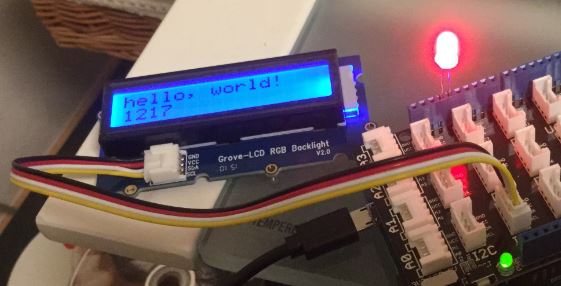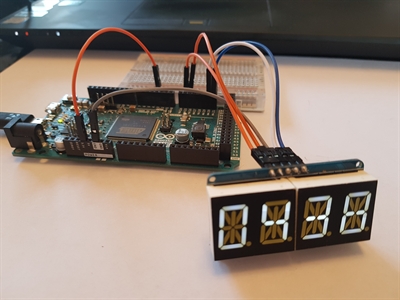

Second we need to tell the board which type of LCD we are using here. With this header file we need not have to send data to LCD bit by bit, this will all be taken care of and we don’t have to write a program for sending data or a command to LCD bit by bit. To interface a LCD to the ARDUINO UNO, we need to know a few things.Īs by the above table we only need to look at these four lines for establishing a communication between an ARDUINO and LCD.įirst we need to enable the header file (‘#include ’), this header file has instructions written in it, which enables the user to interface an LCD to UNO in 4 bit mode without any fuzz. The above figure shows the circuit diagram of 16x2 LCD connected to ARDUINO UNO. So from mere observation from above table we are connecting 6 pins of LCD to controller in which 4 pins are data pins and 2 pins for control. In the circuit you can see we have used 4bit communication (D4-D7). This type of communication enables the user to decrease the pin usage on ARDUINO, unlike other the ARDUINO need not to be programmed separately for using it in 4 it mode because by default the ARDUINO is set up to communicate in 4 bit mode. The ARDUINO IDE allows the user to use LCD in 4 bit mode. PIN6 or E (Enable) to PIN1 of ARDUINO UNO PIN5 or RW (Read/Write) to ground (puts LCD in read mode eases the communication for user) PIN4 or RS (Register Selection) to PIN0 of ARDUINO UNO PIN3 or VEE to ground (gives maximum contrast best for a beginner)

The connections which are done for LCD are given below: We just need to control ENABLE and RS pins to send characters and data accordingly. This puts LCD in highest contrast and read mode. The contrast bit and READ/WRITE are not often used so they can be shorted to ground. In the circuit, you can observe I have only took two control pins, this gives the flexibility. Now in the 14 pins there are 8 data pins (7-14 or D0-D7), 2 power supply pins (1&2 or VSS&VDD or GND&+5v), 3 rd pin for contrast control (VEE-controls how thick the characters should be shown), and 3 control pins (RS&RW&E). One can power or leave the back light pins. In 16x2 LCD there are 16 pins over all if there is a back light, if there is no back light there will be 14 pins. Hardware: ARDUINO UNO, power supply (5v), JHD_162ALCD(16x2LCD), 100uF capacitor.
ARDUINO LEONARDO LCD DISPLAY HOW TO
This tutorial provides Step-by-step guide, Circuit Diagram, and Complete code to learn how to Interface 16x2 LCD with Arduino You can follow the below link for an updated tutorial.

Note: We updated this tutorial and added some more additional information along with a step-by-step guide to interface 16x2 LCD with Arduino. We just have to define the pin numbers and it will be ready to display data on LCD. Here we don’t have to worry about data sending and receiving. Unlike normal development boards interfacing an LCD to an ARDUINO is quite easy. In this tutorial, we are going to interface a 16x2 LCD with ARDUINO UNO. (you can see it in LCD unit, it is the black eye at the back ). But we need not to worry about that because there is another controller (HD44780) in the display unit which does the job of controlling the pixels. Here one must understand that in each character there are 5x10=50 pixels so to display one character all 50 pixels must work together. The 16x2 LCD will have 32 characters in total 16in 1 st line and another 16 in 2 nd line.

The 16x1 display unit will have 16 characters and are in one line. Besides complex display units like graphic displays and 3D dispays, one must know working with simple displays like 16x1 and 16x2 units. And so they are an important part of embedded systems. Display units - big or small, work on the same basic principle. To establish a good communication between human world and machine world, display units play an important role.


 0 kommentar(er)
0 kommentar(er)
